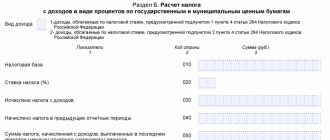Income tax concept
Corporate income tax is a direct payment deducted depending on the financial activities of a legal entity. The tax base is taken into account, obtained by subtracting expenses incurred from income received.
This type of taxation belongs to the most important types of federal taxes. The principle of its operation provides a fiscal and regulatory function aimed at regulating the activities of legal entities. The calculation procedure depends on the type of taxpayer and tax base.
Who pays income tax?
Corporate income tax is paid by :
- all Russian legal entities;
- foreign legal entities that have their representative offices in the Russian Federation or receive income from Russian sources;
- foreign companies recognized as residents of the Russian Federation on the basis of international treaties;
- foreign organizations whose place of management is recognized as Russia, exceptions are cases provided for by international agreements.
Corporate income tax is not paid :
- legal entities with special taxation regimes - Unified Agricultural Tax, simplified tax system, UTII;
- payers of special income tax from gambling business;
- companies listed as participants in the Skolkovo Innovation Center project.
It is emphasized that the obligation to pay tax on profit arises when there is an object of taxation.
Objects of taxation
The object of taxation is the categories of income received by an organization as a result of its financial activities. All profits received are accounted for without VAT and excise taxes.
The main categories of income include:
- profit from the sale of goods or services - this includes revenue both from own production and from the resale of previously acquired property rights;
- non-operating income - these include shared ownership in other organizations, differences in exchange rates, rental of property, interest charges.
Article 251 of the Tax Code of the Russian Federation provides for a list of income not subject to corporate income tax. The main sources of such profit include:
- property received as collateral or deposit;
- contributions to the authorized capital of the company;
- property or funds received under a loan agreement;
- capital investment in leased property.
Costs taken into account
Expenses taken into account for taxation include funds spent on the production and sale of relevant goods and services. When calculating, the corresponding tax period is taken into account.
Also, the corporate income tax takes into account non-operating expenses:
- maintenance of leased property;
- payment of interest on debt obligations;
- issue of own securities;
- exchange rate changes resulting in additional costs;
- liquidation of decommissioned assets.
Documented deductions are recognized as expenses taken into account for tax purposes. There is also a list of expenses that are not taken into account for tax purposes - dividends, loan repayments, contributions to the authorized capital. A complete list of such deductions is presented in Article 270 of the Tax Code of the Russian Federation.
Tax calculation
The basis for calculating corporate income tax is a clear accounting of income and expenses incurred during the tax period. To do this, the taxpayer chooses one of the accounting methods :
- accrual principle - income and expenses are recognized for the period in which they occurred, regardless of the actual receipt or write-off of funds;
- cash method - income and expenses are recorded based on the dates of actual accrual.
Each method has its own procedure for recognizing payments. It is emphasized that the taxpayer must choose one calculation method. It is not allowed to use different principles for income and expenses.
Accrual method
Calculation of taxes using the accrual method provides for a certain procedure for recognizing expenses and income. Profit is recognized based on the following criteria:
- income is recognized for the tax period in which it occurred, regardless of the date of receipt of funds, property or rights to property;
- if the relationship between income and expenses cannot be determined accurately enough, the taxpayer independently distributes them on the basis of uniformity;
- taxable profit from the sale of goods and services is calculated based on the date of sale and does not depend on the date of receipt of funds;
- Non-operating income is recognized on the date of signing the property acceptance and transfer act or the corresponding document, as well as on the date of receipt of funds to the taxpayer’s account under dividends and other agreements.
the following expenses are taken into account in the tax base :
- date of transfer of production raw materials;
- signing by the taxpayer of the act of acceptance and transfer;
- tax payment date;
- settlement periods for concluded contracts.
Cash method
Using the cash method of calculation, the taxpayer takes into account income and expenses on the date of their actual payment. Profit is recognized when credited to a bank account, property or rights to property are received.
The costs incurred are also taken into account in the same way. Payment is recognized as the immediate termination of counter-obligations on the part of the taxpayer.
Tax authorities are against arbitrarily choosing a period to reflect expenses
Situations where taxpayers arbitrarily choose a tax period to reflect certain expenses are, in practice, perceived negatively by auditors. They see this as not an error/distortion that can be corrected according to the rules of paragraph 1 of Art. 54 of the Tax Code of the Russian Federation, but an intentional action, the purpose of which is to prevent the occurrence of a tax loss. And, as a result, “late” amounts are completely excluded from tax expenses.
They argue their position by the fact that tax legislation does not provide for the possibility of arbitrarily choosing the tax period in which these expenses should be reflected.
The most risky situation is when the period to which the expenses relate does not fall within the three-year tax audit period. In this case, tax authorities may conclude that they do not have the opportunity to verify the fact of excessive tax payment due to an error/distortion.
Also, you should not shift expenses over a long period. It is necessary to ensure that by the time the error is corrected (accounting for “late” expenses), the established art. 78 of the Tax Code of the Russian Federation is a three-year period for the return (offset) of overpayments, taking into account that only during the specified period companies have the right to dispose of the corresponding amount of tax overpaid to the budget.
Tax calculation procedure
The amount of corporate income tax is determined by a simple formula: the tax rate is multiplied by the tax base. In this case, the calculation should pay attention to the following aspects:
- the period for which corporate income tax is calculated;
- the amount of all income received during the specified period;
- a list of expenses deducted from the profit received;
- revenue and loss from sales, as well as non-operating activities;
- final tax base;
- exclusion of the amount of loss to be carried forward.
After highlighting the relevant points, they begin to determine the rate and tax base.
Tax rate
The basic corporate income tax rate is 20% . Of them:
- 2% goes to the federal budget, in 2017-2020 - 3%;
- 18% goes to the budget of the constituent entity of the Russian Federation, in 2017-2020 - 17%.
In certain cases the tax rate may be lower. Subjects of the Russian Federation can reduce corporate income tax to 13.5%. This value may be further reduced for the following categories of taxpayers:
- residents of special economic and free economic zones;
- participants in regional investment projects;
- residents of territories of advanced social development or the free port of Vladivostok.
For corporate income tax, in addition to the main one, special tax rates :
- 30% - income received from securities issued by Russian companies, with the exception of dividends;
- 20% to the federal budget - profits from the production of hydrocarbons, as well as revenue from foreign companies;
- 15% - tax on ownership of state, municipal and other securities, as well as dividends received by foreign companies on shares of Russian organizations;
- 13% - dividends received by Russian companies, as well as income on shares, the rights to which are determined by depositary receipts;
- 10% - income of foreign companies not related to the activities of permanent representative offices;
- 9% - interest income on certain municipal securities.
Article 284 of the Tax Code of the Russian Federation also provides for cases when the tax rate is zero. It is emphasized that for each rate the tax base is calculated separately.
The tax base
The tax base is the profit of the organization taking into account the expenses incurred. Depending on the type of income, the following calculation principles :
- sales - expenses incurred for the same purposes are deducted from the amount of income received from the sale of goods or services;
- non-operating transactions - revenue received minus corresponding losses.
The final tax base consists of the sum of non-operating and sales income. If necessary, losses subject to carry forward are excluded from it.
If, as a result of calculations, the tax base turns out to be negative, that is, expenses exceed income, its value is recorded as zero. This is due to the fact that corporate income tax cannot be negative - either positive or zero.
If there is no tax base, there is no taxation.
Tax rates, tax and reporting periods for corporate income tax
Tax rates for corporate income tax are varied. Their differentiation is determined by the tax jurisdiction of the taxpayer organization and the nature of the activity generating taxable income (Article 284 of the Tax Code of the Russian Federation).
The basic income tax rate is set at 20%. In this case, the tax amount calculated at a tax rate of 2% is credited to the federal budget, and the tax amount calculated at a tax rate of 18% is credited to the budgets of the constituent entities of the Russian Federation.
Representative (legislative) bodies of state power of the constituent entities of the Russian Federation are given the right to reduce the tax rate credited to regional budgets for certain categories of taxpayers, but not lower than 13.5%. Thus, the principle of federalism in taxation is implemented and the regulatory function of corporate income tax is carried out.
Corporate income tax differs significantly from most federal taxes in the procedure for transfer to budgets of various levels. The amount of income tax on income in the form of dividends, interest from transactions with state or municipal debt obligations and from income of foreign organizations received from Russian sources is credited to the federal budget. In the remaining part, in legal essence, the income tax is “split”, since in certain percentage shares it goes to the federal budget, the budgets of the constituent entities of the Russian Federation and the budgets of municipalities.
At a base rate of 20%, the profits of most Russian and foreign organizations are taxed.
A reduced tax rate of 10% applies to the income of foreign organizations not related to activities in the Russian Federation through a permanent establishment, from the use, maintenance, or rental of ships, aircraft and other vehicles or containers for international transport.
A tax rate of 13% is used to calculate tax on the income of Russian organizations received in the form of dividends, as well as foreign organizations - tax residents of the Russian Federation that have the actual right to receive income (clause 1.1 of Article 312 of the Tax Code of the Russian Federation).
A rate of 15% applies to income of foreign organizations in the form of dividends from Russian organizations. Also, the income of Russian organizations on various state and municipal securities issued after 01/01/2007 and other income are taxed at a rate of 15%.
At a rate of 9%, income is taxed, in particular, on municipal securities issued before 01/01/2007 for a period of at least 3 years. Taking into account the importance of the development of the market for state and municipal securities, as well as taking into account their still low liquidity and profitability, the legislator applies reduced tax rates on profits from transactions with these types of debt obligations.
There is also a 0% rate for income tax. It applies, for example, to the income of Russian organizations in the form of dividends, if such an organization owns at least 50% of the authorized capital of the dividend-paying organization for at least 365 days; income of organizations on state and municipal bonds issued before 01/20/1997; income of organizations providing social services to citizens.
For resident organizations of various special economic zones (SEZ) and territories of advanced socio-economic development (TOR), a tax rate of 0% is established only for the tax credited to the federal budget. The “zero” tax rate is also applied by organizations carrying out educational or medical activities, subject to the conditions determined by Art. 284.1 Tax Code of the Russian Federation.
There are characteristic features in the taxation of profits of the Central Bank of the Russian Federation, due to its status as a state bank. Profit received by the Central Bank of the Russian Federation as a result of the implementation of the functions assigned to it by the Federal Law “On the Central Bank of the Russian Federation (Bank of Russia)” is taxed at a rate of 0%. Profit received by the Central Bank of the Russian Federation from all other types of activities is subject to taxation on a general basis, i.e. at a rate of 20%.
There is also an increased income tax rate compared to the basic one. It is 30% and is applied to income on securities issued by Russian organizations, the rights to which are recorded in the securities account of a foreign nominee holder. The condition for applying the increased rate is the failure to provide the tax agent with information about the recipient of such income (beneficiary). This approach is consistent with the global practice of disclosing the ultimate beneficiary (beneficiary).
The tax period for corporate income tax is one year. The reporting period is a quarter (Article 285 of the Tax Code of the Russian Federation).
Calculation of advance payments
Calculation of advance payments for corporate income tax is carried out depending on the tax period. The quarterly advance is calculated as the difference between the tax for the current and previous quarter. Eg:
- corporate income tax for the current quarter amounted to 18 thousand;
- for the previous quarter, a tax of 15,300 rubles was paid;
- The advance payment amount is 2700 rubles.
Calculation of monthly advance payments is carried out according to similar principles:
- monthly advance payments in the second quarter are determined by the tax for the first quarter divided by three;
- for the third quarter, find the difference between the tax for the half-year and the first quarter - that is, the actual tax for the second quarter, which is also divided by three;
- advance payment for the last three months - the tax for six months is subtracted from the tax for a nine-month period, the remainder is divided by three.
The monthly advance payments for the first three months are identical to the advances paid for the last quarter of the previous year. If the company is just formed, then monthly advances are not paid until the tax for the full quarter is calculated.
If the amount received is negative, the advance is not paid.
Advance on actual profit
The monthly advance payment based on actual profit is determined according to the following algorithm:
- advance payment for January is equal to the tax on income actually received in a given month;
- for February, the advance payment is equal to the tax for January and February minus the advance payment paid for January;
- advance for March - corporate income tax for January-March minus advance payments for January and February.
All other months up to December are calculated using the same algorithm. This calculation assumes that taxpayers file tax returns 12 times a year.
In order to switch to advance payments based on actual profits next year, the taxpayer must notify the tax service before December 31 of the current tax period.
Tax payment and reporting obligation
A tax period is understood as a period of time for which the amount of tax is determined. But this does not mean that it is necessary to pay off the budget only at the end of this period. And, conversely, the reporting period established within the tax period does not always mean that a company or individual entrepreneur is required to file returns at the end of each of them.
The same income tax requires filing reports, as well as paying the tax amount at the end of each quarter. On the simplified tax system, based on the results of the reporting quarter, half a year and nine months, the advance tax payment is calculated, but the declaration is submitted only at the end of the tax period, that is, for the year as a whole. In the context of fulfilling the duties of a VAT payer, the tax amount is calculated at the end of each quarter, and a declaration is submitted at the same time. But tax payment is made in three payments over the next three months, that is, it is quite formally tied to the calendar end of the tax period.
From all this it follows that one should focus on the established time frames of reporting or tax periods only in a clear connection with the procedure for paying a specific tax, as well as filing a declaration for it. All this is spelled out in detail in the Tax Code, as well as in regional laws, if they establish additional variables in the procedure for paying a particular tax.
The calculation of any budget payment occurs according to the rules defined by the Tax Code or other federal laws. Most taxes and contributions require a specific payment procedure, as well as the preparation and submission of reports. The timing of this is determined based on the tax and reporting periods for each type of payment. We will talk about how to determine the tax period, as well as the reporting period, in this article.
Tax and reporting period
The tax period is the time during which the tax base is formed and income tax is paid accordingly. For organizations, the tax period is equal to the calendar year .
The reporting period is an intermediate stage for paying taxes and making advance payments. The reporting period can be a month, a quarter, a half-year, or nine months.
In the context of these periods, the tax return is submitted:
- no later than 28 days from the end of the relevant reporting period;
- no later than March 28 of the year following the tax period.
Documents are submitted to the tax service at the location of the organization. For each individual division, the declaration is submitted at the location of the corresponding department.
Corporate income tax return
1 file(s) 961.11 KB
Download
Tax period codes
Let's take a closer look at the income tax reporting period codes in the table presented.
| Code | Name |
| 13 | first quarter for the combined group of payers |
| 14 | 6 months for a combined group of payers |
| 15 | 9 months for a combined group of payers |
| 16 | 12 months for a combined group of payers |
| 21 | 4 months |
| 31 | 6 |
| 33 | 9 |
| 34 | 12 |
| 35 | 30 days |
| 36 | 60 |
| 37 | 90 |
| 38 | 4 months |
| 39 | 5 |
| 40 | 6 |
| 41 | 7 |
| 42 | 8 |
| 43 | 9 |
| 44 | 10 |
| 45 | 11 |
| 46 | 12 |
| 50 | last (NP) upon liquidation of the enterprise |
| 57 | 30 days for a combined group of payers |
| 58 | 60 |
| 59 | 90 |
| 60 | 4 months for a combined group of payers |
| 61 | 5 |
| 62 | 6 |
| 63 | 7 |
| 64 | 8 |
| 65 | 9 |
| 66 | 10 |
| 67 | 11 |
| 68 | 12 |





